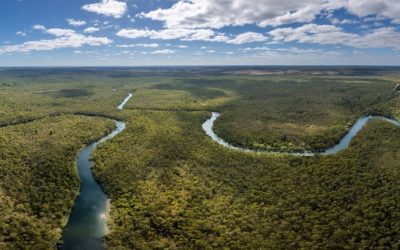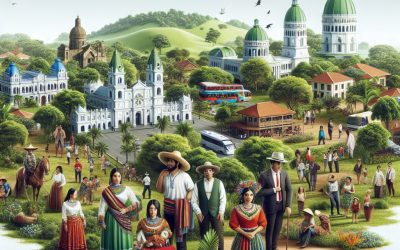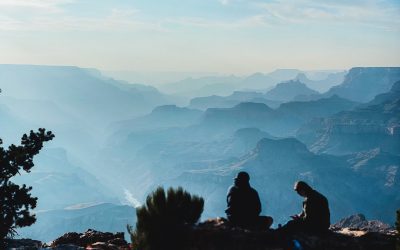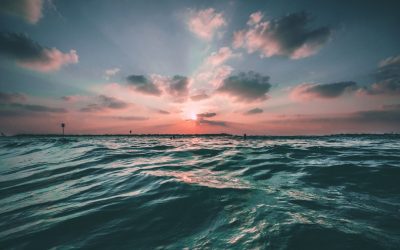World Geography
Geography is the study of the Earth’s landscapes, environments, and the relationships between people and their surroundings. It encompasses both the physical aspects of the Earth, such as its landforms, bodies of water, and climate, as well as the human aspects, including population distribution, cultures, and economies. World geography is a broad field that seeks to understand the complexities of our planet and how humans interact with it. By studying world geography, we can gain a deeper appreciation for the diversity of our planet and the interconnectedness of its various regions.
Geography is a multidisciplinary field that draws on elements of physical science, social science, and humanities. It involves the use of maps, spatial analysis, and geographic information systems (GIS) to understand the Earth’s surface and the processes that shape it. World geography also encompasses the study of human geography, which examines the ways in which people and their activities are distributed across the Earth. By understanding world geography, we can better appreciate the environmental, cultural, and economic challenges facing different regions of the world. This knowledge is crucial for addressing global issues such as climate change, resource management, and international development.
The Five Oceans and Seven Continents
The Earth’s surface is divided into five major oceans: the Pacific, Atlantic, Indian, Southern (or Antarctic), and Arctic Oceans. These vast bodies of water play a crucial role in regulating the Earth’s climate and supporting diverse marine ecosystems. The oceans also serve as important transportation routes and a source of food and other natural resources for human societies around the world.
In addition to the oceans, the Earth’s landmasses are divided into seven continents: Africa, Antarctica, Asia, Europe, North America, Australia (or Oceania), and South America. Each continent has its own unique physical and cultural characteristics, shaped by millions of years of geological processes and human history. From the deserts of Africa to the rainforests of South America, the continents offer a rich tapestry of landscapes and environments for exploration and study.
Major Mountain Ranges and Deserts
The Earth’s surface is also marked by major mountain ranges and deserts that have shaped the planet’s physical and cultural landscapes. The Himalayas, for example, are the highest mountain range in the world and are home to diverse ecosystems and cultures in countries such as India, Nepal, and Bhutan. The Andes in South America, the Rockies in North America, and the Alps in Europe are other prominent mountain ranges that have influenced human settlement patterns and economic activities.
Deserts cover about one-third of the Earth’s land surface and are characterized by low precipitation and extreme temperatures. The Sahara Desert in Africa is the largest hot desert in the world, while the Gobi Desert in Asia is one of the largest cold deserts. Deserts are not only home to unique flora and fauna but have also been important trade routes and cultural crossroads throughout history.
Climate Zones and Biomes
The Earth’s climate is influenced by a variety of factors, including latitude, altitude, ocean currents, and prevailing winds. As a result, the planet is divided into different climate zones, each with its own characteristic weather patterns and ecosystems. The equator, for example, experiences a tropical climate with high temperatures and heavy rainfall, while the polar regions have a cold and dry climate.
These climate zones give rise to different biomes, or large ecological areas characterized by distinct plant and animal communities. The tropical rainforest biome, found near the equator, is home to a diverse array of species and is vital for regulating the Earth’s climate. The grasslands biome, found in regions such as the African savannah and North American prairies, supports grazing animals and has been important for human agriculture throughout history.
Human Geography and Population Distribution
Human geography examines the ways in which people and their activities are distributed across the Earth’s surface. It encompasses topics such as population growth, migration patterns, urbanization, and cultural diversity. Understanding human geography is crucial for addressing global challenges such as poverty, inequality, and environmental degradation.
Population distribution is uneven across the world, with some regions experiencing rapid population growth while others are declining. The majority of the world’s population lives in Asia, particularly in countries such as China and India. Urban areas are also growing rapidly, with more than half of the world’s population now living in cities. This trend has significant implications for infrastructure development, resource management, and social inequality.
Historical and Cultural Geography
Historical geography examines how human activities have shaped the Earth’s landscapes over time. It explores topics such as colonialism, trade routes, and the rise and fall of empires. Cultural geography focuses on how human cultures have developed in different regions of the world and how they interact with their environments.
The Silk Road, for example, was an ancient trade route that connected China with Europe and facilitated the exchange of goods, ideas, and technologies across Eurasia. This historical trade route had a profound impact on the development of cultures and economies along its path. Similarly, cultural geographers study how different societies have adapted to their environments through practices such as agriculture, architecture, and religious beliefs.
The Importance of Geographic Knowledge
Geographic knowledge is crucial for addressing global challenges such as climate change, resource management, and international development. By understanding world geography, we can better appreciate the environmental, cultural, and economic challenges facing different regions of the world. This knowledge is crucial for addressing global issues such as climate change, resource management, and international development.
Geographic knowledge also helps us to understand our interconnectedness with other regions of the world. By studying world geography, we can gain a deeper appreciation for the diversity of our planet and the interconnectedness of its various regions. This understanding can foster a sense of global citizenship and empathy for people from different cultures and backgrounds.
In conclusion, world geography is a complex and multifaceted field that encompasses both physical and human aspects of the Earth’s landscapes. By studying world geography, we can gain a deeper appreciation for the diversity of our planet and the interconnectedness of its various regions. This knowledge is crucial for addressing global challenges such as climate change, resource management, and international development. It also helps us to understand our interconnectedness with other regions of the world and fosters a sense of global citizenship.
FAQs
What is world geography?
World geography is the study of the Earth’s landscapes, environments, and the relationships between people and their environments. It encompasses the physical features of the Earth, as well as the human activity that takes place on it.
Why is world geography important?
World geography is important because it helps us understand the world around us. It provides insights into the physical and human processes that shape our planet, and helps us make informed decisions about how to interact with our environment.
What are the main branches of world geography?
The main branches of world geography include physical geography, which focuses on the Earth’s natural features and processes, and human geography, which examines the relationships between people and their environments.
How does world geography impact our daily lives?
World geography impacts our daily lives in numerous ways, from influencing the weather and climate we experience, to shaping the availability of natural resources and influencing the distribution of populations and cultures around the world.
What are some key concepts in world geography?
Key concepts in world geography include location, place, human-environment interaction, movement, and region. These concepts help geographers understand and interpret the world around them.
How Rivers Shape the Landscape: Erosion and Deposition
Rivers are potent agents of erosion, continually moulding and remoulding the Earth’s surface. As water flows downstream, it collects sediment and rocks, eroding them and transporting them along its course. This erosional process can form deep valleys, canyons, and gorges over millions of years. The water’s force, combined with the abrasive action of the sediment it carries, can cut through solid rock, leaving behind evidence of the river’s strength. Moreover, rivers erode the landscape through hydraulic action, whereby the force of the water wears away at the riverbanks and bed. This can be particularly pronounced during periods of high flow, such as during a flood. The sheer force of the water can dislodge rocks and sediment, further contributing to the erosion process. Over time, this relentless action can create wide river valleys and floodplains, as the river continues to shape the terrain around it. Summary Rivers have the power to erode the earth’s surface over time, shaping the landscape and creating new features. Deposition is the process by which rivers build and shape the land, depositing sediment and creating new landforms. Meandering and oxbow lakes are a result of the impact of rivers on the landscape, showcasing the dynamic nature of river systems. River valleys are formed and evolve over time, showcasing the long-term impact of rivers on the landscape. Rivers play a crucial role in creating canyons and gorges, carving out impressive features in the earth’s surface. Deposition: How Rivers Build and Shape the Land River Deposition and Landscape Shaping This deposition can build up over time, creating new land and shaping the landscape in the process. Moreover,...
Paraguay
Paraguay (República del Paraguay (Spanish); Tetä Paraguáype (Guaraní) (Republic of Paraguay)) Capital: Asunción Population (Estimated July 2012): 6,541,591 Area: 406,752km2 or 157,048mi2 Currency: Guaraní (Plural Guaranies) Official Language: Spanish and Guaraní Political Information: Presidential Republic Official Religion: No Official Religion(approximately 89.6% of the population are Roman Catholic, 6.2% are Protestant, 1.1% have other Christian beliefs, 1.9 have other religious beliefs and 1.1% have no religious beliefs) Highest Mountain: Cerro Pero at 842m or 2,762ft GDP Official Exchange Rate (OER is more precise at gauging a country’s economic power) (Estimated 2011): $22.3 billion (US$) or (GBP) GDP (OER) Per Capita (per member of the population estimated 2011): (US$) or (GBP) GDP Purchasing Power Parity (PPP is good for gauging living conditions and the use of resources but is not as accurate as OER. This data has been calculated based on the sum value of all goods and services produced in the country valued at prices prevailing in the United States) (Estimated 2011): $36.21 billion (US$) or (GBP) GDP (PPP) Per Capita (per member of the population estimated 2011): $5,500 (US$) or (GBP) Time Zone (GMT/UTC): -4:00 Wildlife: Counties/Provinces/States: 17 departments (departamentos, singular – departamento) and 1 capital city*; Alto Paraguay, Alto Parana, Amambay, Asuncion*, Boqueron, Caaguazu, Caazapa, Canindeyu, Central, Concepcion, Cordillera, Guaira, Itapua, Misiones, Neembucu, Paraguari, Presidente Hayes, San Pedro Leaders: President Fernando Lugo with Vice President Federico Franco. Additional: Gained independence from Spain on the 14th of May 1811. Sources: CIA World Fact Book, Encyclopaedia Britannica. Paraguay Paraguay, a landlocked country in South America, is often referred to as the “Heart of South America” due to its central location on the continent. It is...
Best Places to Visit for Geography Enthusiasts
When it comes to geographical wonders, there are numerous awe-inspiring locations around the world that merit exploration. From the magnificent Grand Canyon in the United States to the remarkable Great Barrier Reef in Australia, there is an abundance of natural beauty to observe. The Grand Canyon, situated in Arizona, is an immense geological formation that extends for over 446 kilometres and is up to 29 kilometres wide in some areas. It stands as a testament to the power of erosion and natural forces, with its intricate layers of rock revealing millions of years of Earth’s history. The Great Barrier Reef, conversely, is the world’s largest coral reef system, stretching over 2,300 kilometres and comprising thousands of individual reefs and islands. It is a UNESCO World Heritage site and is home to an extraordinary diversity of marine life, making it essential viewing for any nature enthusiast. Another geographical wonder that ought not to be overlooked is the Amazon Rainforest in South America. Spanning across nine countries, including Brazil, Peru, and Colombia, the Amazon is the largest tropical rainforest in the world and is home to an estimated 390 billion individual trees. It is also one of the most biodiverse regions on the planet, with millions of species of plants, animals, and insects inhabiting it. The Amazon River, which flows through the rainforest, is the largest river by discharge volume in the world and plays a crucial role in the region’s ecosystem. Exploring the Amazon Rainforest provides a unique opportunity to witness the wonders of nature at close quarters and to appreciate the importance of preserving these vital ecosystems for future...
Mountain Formation: How Are Mountains Created?
Mountains are amongst the most impressive natural features on Earth, and they have captivated human interest for centuries. The process of mountain formation is complex and involves various geological forces and processes. The creation of these majestic landforms is primarily influenced by the movement of tectonic plates, volcanic activity and erosion. Plate tectonics play a crucial role in mountain formation, as the collision or divergence of tectonic plates can result in the uplift of rock and the creation of mountain ranges. Volcanic activity can also contribute to mountain formation through the accumulation of lava and ash, forming volcanic mountains. Additionally, erosion shapes mountains over time, carving out valleys and creating distinctive features. Understanding these processes provides insight into the formation and evolution of these remarkable geological structures. Summary Mountains are formed through various geological processes such as plate tectonics, volcanic activity, erosion, compression, and tension. Plate tectonics play a crucial role in the formation of mountains by the movement and collision of tectonic plates. Volcanic activity can lead to the formation of mountains through the accumulation of lava and volcanic materials. Erosion, caused by natural elements such as wind and water, can also contribute to the formation of mountains over time. Compression and tension are key factors in the formation of folded and fault-block mountains, respectively, highlighting the ongoing process of mountain formation. Plate Tectonics and Mountain Building The Collision of Tectonic Plates When two tectonic plates collide, the immense pressure and force can lead to the formation of mountains. This process, known as orogeny, occurs in several ways. In some cases, two plates may collide head-on, causing the...
Climate Zones of Papua New Guinea: Different climate regions Of Papua New Guinea
Papua New Guinea, situated in the southwestern Pacific Ocean, is renowned for its diverse and distinctive climate zones, which exert a considerable influence on the nation’s biodiversity. The climate in Papua New Guinea can be classified into six primary zones: highland, coastal, island, lowland, rainforest and mountain. Each of these climate zones possesses its own unique characteristics, which play a pivotal role in shaping the country’s flora and fauna. A thorough comprehension of these climate zones is crucial for understanding Papua New Guinea’s rich biodiversity and the conservation challenges it faces. Summary Papua New Guinea has diverse climate zones, including highland, coastal, island, lowland, and rainforest zones. The highland climate zone is characterised by cool temperatures and high rainfall, making it suitable for agriculture and horticulture. The coastal climate zone experiences high temperatures and humidity, with a distinct wet and dry season, making it ideal for tropical crops and fishing. The island climate zone is influenced by oceanic conditions, with warm temperatures and moderate rainfall, supporting diverse marine life and ecosystems. The lowland climate zone has hot and humid conditions, with heavy rainfall, creating ideal conditions for tropical rainforests and diverse wildlife. Highland Climate Zone The highland climate zone in Papua New Guinea is characterized by cool temperatures and high rainfall. This climate zone is found in the central mountainous region of the country, where elevations can reach up to 4,500 meters above sea level. The highland climate zone is home to a diverse range of flora and fauna, including unique species of birds, mammals, and plants. The cool temperatures and high rainfall create ideal conditions for the growth...
Political Boundaries of Papua New Guinea: Provinces, Districts, or Historical Boundaries.
Papua New Guinea is a nation situated in the southwestern Pacific Ocean. It is renowned for its cultural diversity, striking landscapes and abundant biodiversity. The country comprises the eastern half of New Guinea island, along with numerous smaller islands. Papua New Guinea is a sovereign state with a parliamentary democracy and is divided into several political boundaries that aid in governing the country. These boundaries play a vital role in the administration and governance of the nation, having evolved over time to reflect the country’s intricate history and diverse cultural landscape. The political boundaries of Papua New Guinea are crucial for the effective governance and administration of the country. They serve to define the jurisdiction of various levels of government, from national to local. These boundaries also play a significant role in resource allocation, public service delivery and representation of diverse communities within the country. A thorough understanding of Papua New Guinea’s political boundaries is essential for comprehending the country’s governance structure and the complexities of its diverse cultural and geographical landscape. Summary Papua New Guinea is a diverse country with complex political boundaries that have evolved over time. The country is divided into 22 provinces and the National Capital District, each with its own administrative divisions. Historical boundaries and cultural regions play a significant role in shaping the political landscape of Papua New Guinea. Districts and local governance are crucial for effective administration and service delivery within the country. Challenges and controversies surrounding political boundaries in Papua New Guinea highlight the need for ongoing dialogue and resolution. Provinces and Administrative Divisions Papua New Guinea is divided into 22...
Natural Resources of Papua New Guinea: Where Natural Resources are Located in Papua New Guinea
Papua New Guinea, situated in the south-western Pacific Ocean, is renowned for its abundant and diverse natural resources, which are integral to the nation’s economy and the livelihoods of its inhabitants. The country boasts a wealth of mineral, forest, agricultural, water and energy resources, ranking it amongst the world’s most resource-rich nations. These natural assets have sustained and fostered economic development for Papua New Guineans for centuries. However, the exploitation and management of these resources have presented considerable challenges, including environmental degradation, social discord and economic inequalities. In recent years, there has been an increasing emphasis on the sustainable management and conservation of Papua New Guinea’s natural resources to ensure their long-term viability and benefit for future generations. The natural resources of Papua New Guinea have been instrumental in shaping the country’s economy and society. The diverse array of resources has generated employment opportunities, contributed to economic growth and supported the livelihoods of millions. Nevertheless, the exploitation of these resources has also resulted in environmental degradation, deforestation and pollution, posing significant challenges for sustainable development. The government and various stakeholders have been endeavouring to improve the management and conservation of these resources to ensure their sustainable use and benefit for future generations. This article will examine the various natural resources in Papua New Guinea, their importance, challenges and efforts towards their conservation and sustainable management. Summary Papua New Guinea is rich in natural resources, including minerals, forests, agriculture, water, and energy. The mineral resources in Papua New Guinea include gold, copper, and nickel, making it a significant player in the global mining industry. The country’s forest resources are vast...
Cultural or Historical Sites of Papua New Guinea: Important Cultural Landmarks or Historical Sites In Papua New Guinea
Papua New Guinea boasts a rich cultural and historical heritage, encompassing a diverse array of traditional villages, sacred sites, ancient rock art, and colonial-era landmarks. These cultural and historical sites provide a unique glimpse into the complex history of Papua New Guinea‘s indigenous peoples, as well as the influence of colonialism and the Second World War on the region. From the ancient rock art found in the highlands to the colonial-era structures in Port Moresby, Papua New Guinea’s cultural and historical sites stand as a testament to the country’s vibrant and diverse heritage. The cultural and historical sites of Papua New Guinea hold great significance not only for the nation’s inhabitants but also for the global community at large. These sites offer a distinctive opportunity to gain insight into the traditions, customs, and beliefs of Papua New Guinea’s indigenous peoples, as well as the impact of colonialism and the Second World War on the region. Consequently, it is crucial to preserve and safeguard these sites for future generations, both within Papua New Guinea and worldwide. This article will examine the importance of preserving Papua New Guinea’s cultural landmarks, the significance of traditional villages and sacred sites, the exploration of ancient rock art and cave paintings, the role of historical sites in Papua New Guinea’s colonial history, the impact of the Second World War on the country’s historical sites, and the future of Papua New Guinea’s cultural and historical heritage. Summary Papua New Guinea is home to a rich tapestry of cultural and historical sites, reflecting the diverse heritage of its people. Preserving Papua New Guinea’s cultural landmarks is crucial...
Terrain and Topography of Papua New Guinea: mountains, valleys, and plains.
Papua New Guinea is a nation situated in the southwestern Pacific Ocean. It is renowned for its diverse and rugged terrain, encompassing mountains, valleys and plains. The country occupies the eastern half of New Guinea, the world’s second-largest island, along with numerous smaller islands. Papua New Guinea‘s terrain and topography result from its location on the Pacific Ring of Fire, an area known for volcanic activity and tectonic plate movements. This has led to the formation of dramatic landscapes, including towering mountains, deep valleys and expansive plains. The varied terrain and topography of Papua New Guinea have significantly influenced the country’s climate, culture and traditions. The terrain of Papua New Guinea is characterised by its rugged and mountainous landscape, with peaks exceeding 4,000 metres in height. The country is home to some of Oceania’s highest mountains, including Mount Wilhelm, which stands at 4,509 metres above sea level. These majestic mountains are a defining feature of Papua New Guinea’s topography and substantially impact the country’s climate and biodiversity. In addition to its mountains, Papua New Guinea also boasts lush valleys and vast plains, each with unique characteristics and ecological significance. The diverse terrain and topography of Papua New Guinea render it a truly remarkable and varied country, with a rich natural heritage worthy of preservation for future generations. Summary Papua New Guinea’s terrain and topography are diverse, ranging from majestic mountains to lush valleys and vast plains. The mountains of Papua New Guinea are not only majestic but also home to unique flora and fauna, some of which are found nowhere else on earth. The lush valleys of Papua New...
History of Papua New Guinea
Papua New Guinea, situated in the south-western Pacific Ocean, is a nation with a rich history and diverse culture. Archaeological evidence suggests human settlement in the region dates back approximately 50,000 years, with the arrival of Austronesian-speaking peoples. These early inhabitants were hunter-gatherers who lived in small, semi-nomadic groups and relied on the region’s abundant natural resources for sustenance. The indigenous people of Papua New Guinea developed a profound connection to the land and environment, which is reflected in their traditional customs, beliefs and practices. The indigenous culture of Papua New Guinea is remarkably diverse, with over 800 distinct languages spoken throughout the country. Each ethnic group possesses its own unique traditions, art forms and social structures, which have been transmitted through generations. Traditional practices such as oral storytelling, dance and music play a crucial role in preserving the cultural heritage of the indigenous people. The complex and vibrant cultural landscape of Papua New Guinea demonstrates the resilience and ingenuity of its indigenous population, who have maintained their traditions despite external influences and modernisation. Summary Indigenous culture in Papua New Guinea dates back over 60,000 years, with diverse tribal groups and unique traditions. European exploration and colonization in the 19th century led to significant changes in the social and political landscape of Papua New Guinea. The Battle of Kokoda during World War II was a pivotal moment in the country’s history, with Australian and Papua New Guinean forces fighting against Japanese invaders. Papua New Guinea gained independence from Australia in 1975, marking the beginning of a new era for the country. The country has faced political and social challenges,...
Population Density of Papua New Guinea
Papua New Guinea is a nation situated in the southwestern Pacific Ocean. It is renowned for its diverse cultures, striking natural landscapes and abundant biodiversity. The country comprises the eastern half of New Guinea island, along with numerous smaller islands. With a population exceeding 8 million, Papua New Guinea is amongst the most culturally diverse nations globally, boasting over 850 indigenous languages spoken throughout its territories. Port Moresby, the capital city, is the country’s largest urban centre and serves as its economic and cultural focal point. Papua New Guinea possesses a rich history and a distinctive blend of traditional and contemporary influences. The nation’s economy is predominantly agricultural, with the majority of its populace engaged in subsistence farming. In recent years, there has been an increased emphasis on developing the country’s natural resources, including mining and petroleum extraction. Despite its natural beauty and cultural wealth, Papua New Guinea faces numerous challenges, including widespread poverty, limited access to healthcare and education, and environmental degradation. These factors significantly influence the population density and distribution within the country. Summary Papua New Guinea is a diverse country with over 800 languages and a rich cultural heritage. Factors influencing population density in Papua New Guinea include geographical features, climate, and access to resources. The population in Papua New Guinea is unevenly distributed, with the majority living in the highlands and coastal areas. High population density in urban areas leads to challenges such as inadequate infrastructure and limited access to services. Low population density in rural areas can lead to limited economic development and access to healthcare and education. Factors influencing population density Several factors...
Ocean Currents and Their Impact on Climate
Ocean currents are continuous, directed movements of seawater generated by a combination of wind, temperature, salinity and the Earth’s rotation. These currents play a crucial role in regulating the Earth’s climate, influencing weather patterns and shaping marine ecosystems. Ocean currents can be found in all major bodies of water, from the vast and powerful Antarctic Circumpolar Current to the smaller, more localised coastal currents. They are essential for the distribution of heat, nutrients and marine life throughout the world’s oceans. Ocean currents can be classified into two main types: surface currents and deep ocean currents. Surface currents are driven by the wind and are found in the top 400 metres of the ocean. They are responsible for transporting warm or cold water across the globe, affecting the climate of coastal regions and influencing weather patterns. Deep ocean currents, on the other hand, are driven by differences in water density caused by variations in temperature and salinity. These currents can extend thousands of metres below the surface and play a crucial role in the global circulation of seawater. Summary Ocean currents are continuous, directed movements of ocean water that play a crucial role in regulating the Earth’s climate. Ocean currents help distribute heat around the globe, influencing weather patterns and climate regulation. There are two main types of ocean currents: surface currents, driven by wind, and deep ocean currents, driven by differences in water density. Ocean currents can influence weather patterns by transporting warm or cold water to different regions, affecting temperature and precipitation. Ocean currents have a significant impact on marine ecosystems, influencing nutrient distribution, migration patterns, and the...











